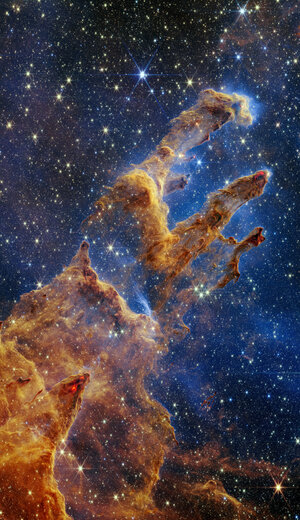

Access the video
Although it may appear that near-infrared light has allowed Webb to “pierce through” the clouds to reveal great cosmic distances beyond the pillars, there are no galaxies in this view. Instead, a mix of translucent gas and dust known as the interstellar medium stands in the way. It blocks our view of the deeper universe – and is lit up by the collective light from the packed “party” of stars in the region.
This scene was first imaged by the NASA/ESA Hubble Space Telescope in 1995, and again in 2014, but many other world-class observatories have also stared deeply at this region, like the ESA Herschel telescope. Each advanced instrument offers researchers its individual, tantalising new details about this region, which is practically overflowing with stars.
Webb’s new view of the Pillars of Creation will help researchers revamp their models of star formation by identifying far more precise star populations, along with the quantities of gas and dust in the region. Over time, they will begin to build a clearer understanding of how stars form and burst out of these dusty clouds over millions of years.
This tightly cropped image is set within the vast Eagle Nebula, which lies 6500 light-years away.



